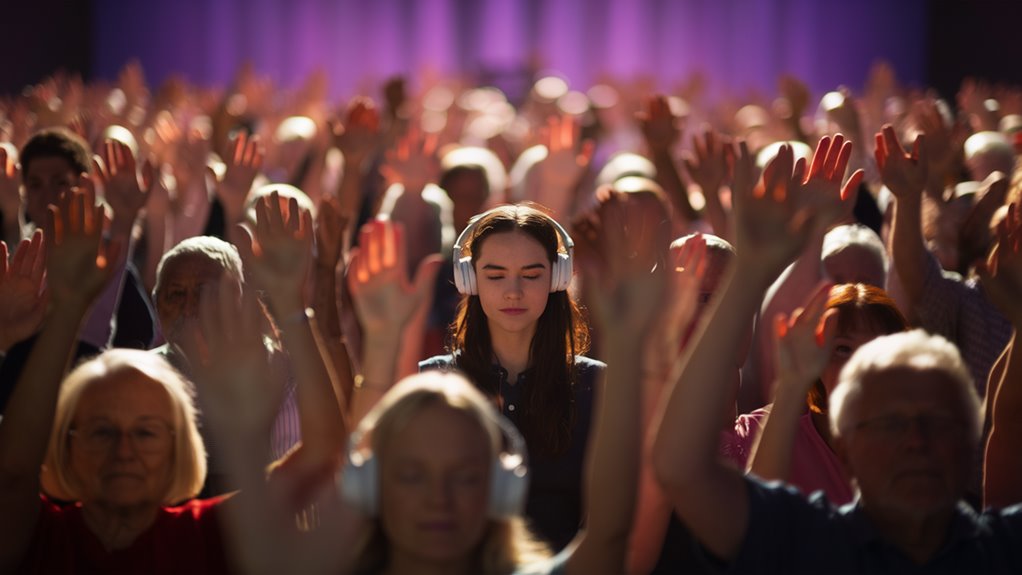Song Choice: How to Pick the Right One

Know Your Music Goal
Picking a song starts with knowing your aim. Whether for a show, practice, or getting better, your goal guides each choice you make.
Look at Your Audience
Get to know your target listeners by looking at three key points:
- Age and other key facts
- Cultural roots
- How much they know about music 이 가이드에서 자세한 정보 확인하기
Song Elements to Think About
Mood and Music Bits
Make your song move people by:
- Keys that set the mood
- Beats speed (60-140 BPM)
- Volume changes for depth of feeling
Technical Must-Haves
Make sure it’s top quality:
- Lowest sound rate: 44.1kHz
- Usual sound depth: 16-bit
- Check if files work well
- Smooth change points
Plan Your Choices
Turn random picks into careful choices by checking:
- Right type of music
- How hard the parts are
- Needed tech
- Where it’ll be played
Using these steps helps you find music that fits both the player and listeners while keeping up with all tech needs.
Set Your Music Goal
Choosing a song means first knowing your music goal.
Before you pick, think about your main aims by asking:
- Is it for a show, practice, or personal growth?
- Is this a solo or group thing?
- What skills do you want to get better at?
Think About Live Shows
When picking music for a live show, look at:
- Where it is and sound setup
- What the listeners like and are like
- How much time you have and event flow
- Can the players handle it
Better Your Skills
For getting better, focus on parts that:
- Work on certain music moves
- Grow hard chord work
- Better picking skills
- Better timing
Learn and Move Forward
Pick songs that go with your learning goals by:
- Fitting your skill level now
- Adding new things bit by bit
- Giving right challenges
- Helping you grow bit by bit
Have Fun
Balance needs with:
- Keeping you going
- Goals you can hit
- Enjoying your play
- Keeping you in the game long
Pick the Mood
How to Pick Music Mood: Learn It All
Get the Music Bits and Feel Right
Picking the right mood with music needs a good look at both tech bits and feelings.
The tie between sound parts and mood can pull people in when it lines up just right.
Key tones, speed, and tools set up the mood you want.
Main Bits for Mood Choice

Tonal Bits
Major tones make for bright, happy vibes for fun times.
Minor tones share deep thoughts or sadness, right for quiet or deep times.
Wide Ranges in Sound
How loud or soft music gets plays a big part in how it feels.
Matching beats and sound flow sets the base mood and keeps energy even.
More Ways to Match Mood
Look at Core Bits
- How voices sound and feel
- Patterns in chords
- Keeping energy levels right
- How instruments mix
Think About the Spot
Getting the mood right for the spot matters a lot.
Tools without words let you bend feelings without lyrics getting in the way.
Try it out right there to make sure it hits right.
Best Ways to Share Feelings
Go for songs that match your mood aim while thinking about sound space and what listeners expect.
Keep the music matching all through the time or event.
Think About Your Listeners
Get to Know Your Music Listeners
Who They Are Matters for Music Success
How well you pick music leans a lot on knowing your listeners by age, roots, and likes. Make sure you know what sorts of music they lean into.
Older folks might like classic rock, while young ones could lean to new pop or hip-hop.
Think About Culture and Place
Music likes can change with where you are and the roots people have.
When picking for folks from all over, think on lyrics and bits that matter to them all. Knowing these deep bits helps make sure music brings folks together, not apart.
How Much They Know About Music
Smarter music fans like tricky bits and top skill shows, while regular folks might like tunes that feel known and easy.
Good picking means:
- Looking at what’s hot for them
- Seeing what others played at like events
- Knowing what worked before
- What the place likes
This way, based on data, you get the best join from listeners, making sure a great show.
Learn All on Music Speed: Full Guide
Get Music Speed Basics
Speed and buzz in music are key to picking right. Beats per minute (BPM) shows speed, with different speeds making different feels.
Slow beats from 60-85 BPM give a calm or thought-heavy feel, fast beats from 120-140 BPM bring lots of life and get folks moving. Your Karaoke Room for a Fun Time
Energy and Sound Range
Seeing a song’s energy asks for a look at lots of parts, like how the sound moves and shifts and how loud or soft it gets.
Main things are how packed the tunes are, sound ups and downs, and how complex the beat gets. All these bits work to set up the song’s feel trip and keep listeners into it all through.
Pick the Right Speed for What You Do
Choosing a speed for what’s happening is key to making it work out best. Big actions go well with tracks at 120-140 BPM to up performance and drive.
Quiet times go best with middle speeds of 90-110 BPM, giving a soft push without being too much.
Keep the Flow and Even Feel
Keeping the feel even asks for smart planning based on what you need it for.


